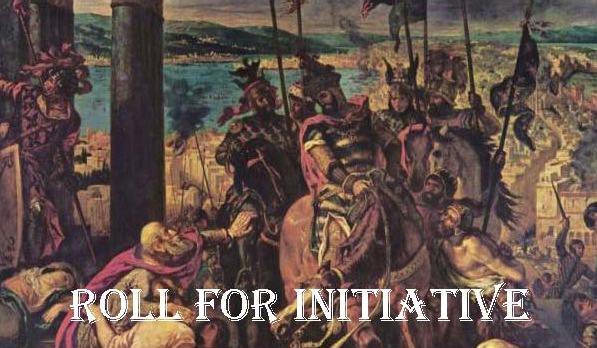
Part 3 - the Setting
Space Opera has a default setting, much like Traveller although it is much less developed. Much of the setting detail is revealed in the miniatures game Space Marines which serves as a companion game to Space Opera. It is in Space Marines that we learn about the various races that are described in generic terms in Space Opera. Humans/humanoids comprise several star nations which fill the various space stereotypes; Terran Union ("The Federation"), Azuriach Imperium ("Space Nazis"), Galactic People's Republic ("Space Commies"), Mercantile League ("Space Capitalists"), Ranan Horde ("Space Mongols") and IRSOL Confederacy ("Space Elves"). Beyond these, things really start to get cheesy. You have two feline races, the sensuous, hunter race called the Avatars and the technophile MekPurrs. The democratic, but militant canines are called the Rauwoofs, the traditionalist, monarchist bear-people are the Blarads, the flightless, egg-worshipping bird-people are the Whistlers and the fecund, expansionist lizardfolk are called Hisss'ist.
While hostility between the races is common, the Azuriach Imperium and the Hisss'ist seem particularly prone to aggression, they are still considered to be player races. There are, however, several truly alien races which are considered to be NPC races only. These are the Bugs, the Klackons and the Mertuns. The Bugs are pulled right out of "Starship Troopers" (the book, not the movie). They have workers, warriors and brain bugs, they use advanced technology (though primitive by human standards) and the communicate by telepathy. Individual bugs (not brain bugs) are fairly unintelligent, but not mindless. They are capable of some independent action, though tactics and coordination are limited. As such, they tend to utilize swarm tactics, sacrificing individual warriors the way humans would spend ammo. Klackons are large, intelligent crabs. They are more sophisticated than the Bugs and may engage in trade with other races. However, they are just as likely to eat foreign emmissaries as parley with them, so caution is always warranted. Finally, the Mertuns are technologically-advanced octopoids who are always seen in personal tripod units when encountered by other races. They are not so much evil as simply alien. They have little interest in other races except when they have something the Mertuns want.
Part 4 - final thoughts
Although for the most part, Space Opera is not a game I can recommend, there are some parts I quite like. Two things in particular, come to mind, space combat and worldbuilding. In the case of the former, it is not so much the mechanics of space combat I find appealing (they are, in fact, just as complicated as the personal combat rules). Rather, it is the basic assumptions I like. Ship-to-ship combat in Space Opera takes place at ranges of tens or hundreds of light-seconds. None of this "don't-shoot-till-you-see-the-whites-of-their-eyes" Star Trek space combat. Considering that naval combat today typically takes place at ranges beyond the horizon, it's hard to understand why spaceships would have to be bow-to-bow before opening up on each other. Of course, when you are firing at a ship that is 300 LS away, if you use conventional EM-based weapons and sensors, you're never going to hit a darn thing. After all, what you are seeing is the location of the enemy vessel five minutes ago. So Space Opera ship weapons and sensors utilize tachyon technology. Also, there isn't the variety of spaceship weapons that you find in some space games. I've never been all that impressed with massive catalogues of weapon technologies, many of which seem to be variations on a theme, like lasers, blasters, masers, grasers, phasars, proton beams, etc. In Space Opera, you have nova guns (a type of tachyon particle beam), megabolt torpedoes (a pulsed nova gun) and startorps (a powerful guided missile), that's it. Nova guns are based on "Precursor" technology, so there is no issue with more advanced weapons coming into the campaign.
As mentioned above, the other thing I really like in Space Opera is worldbuilding. Anyone who has ever played the game or even read the rules can't help but be inspired by reading the descriptions of increasingly more hostile planet types and the sorts of effects they have on characters and creatures inhabiting those worlds. Section 15.5 is my personal favourite, going into detail on how the combination of axial tilt, orbital eccentricity and location relative to the stellar ecosphere affects climate. The thought of getting stranded on a type 12 planet (extreme orbital eccentricity leading to the planet passing right through the stellar ecosphere) and facing whatever local fauna is tough enough to survive such conditions, is the stuff of nightmares. There are loads of good stuff in there for GMs running space-based rpgs to mine.
-Rognar-


1 comment:
Its been a while since I read it but I believe in the book Hyperion, the combat was done at extreme range as well. A fleet jumps into a system locates the enemy and fire misiles that can also jump to hyperspace and arrive almost instaneously at their target.
That series is probably the best sci-fi series I've read.
Post a Comment